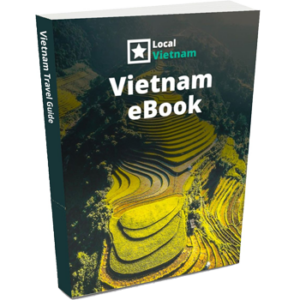The Vietnam War, spanning over two decades from the 1940s to the 1970s, was a complex and highly consequential conflict that emerged from Vietnam’s struggle for independence from French colonial rule. The war pitted South Vietnam, supported by the United States, against North Vietnam under the leadership of Ho Chi Minh, with the underlying ideological backdrop of communism versus capitalism. This multifaceted struggle shaped not only the political and military landscape of Vietnam but also had profound implications for the global balance of power during the Cold War era.
From its origins during French colonial times to the eventual retreat of American forces and the fall of Saigon, this Vietnam War timeline offers a comprehensive understanding of the events and developments that shaped this tumultuous period in history. Exploring this timeline provides valuable insights into the various phases, key battles, and significant political shifts that defined the Vietnam War.
- French colonial times
- The Second World War
- The war with the French
- Geneva agreement
- The first American soldiers
- America enters the Vietnam War
- More troops, more deaths, more protests
- The Great Offensive of Northern Vietnam
- Gradual withdrawal from Vietnam
- End of Vietnam War
- FAQ
French colonial times
The Vietnam War was a complex and significant conflict that had its roots in the era of French colonial rule in Vietnam. In the late 19th century, France established its presence in Vietnam, gradually extending its control over the region. The French rule officially began with the creation of French Indochina in 1887, which included Vietnam, Cambodia, and Laos. Vietnam, known as French Cochinchina, became a crucial colony for France due to its strategic location and valuable resources.
Under French rule, the Vietnamese people faced exploitation, forced labor, high taxes, and cultural suppression. Over time, nationalist sentiments grew stronger, leading to the formation of various independence movements and a desire for self-determination.
The Second World War
Amidst the global conflict, Vietnam became occupied by Japanese forces in 1940, who sought to utilize the region’s resources and establish control over Southeast Asia. The Japanese occupation weakened French colonial rule, as they placed the French authorities under their influence but allowed the administration to continue on a limited scale.
As the war progressed, Vietnamese nationalist movements saw an opportunity to challenge both Japanese and French dominance. One prominent figure during this time was Ho Chi Minh, a Vietnamese nationalist leader and communist revolutionary. Ho Chi Minh returned to Vietnam in 1941 and began organizing resistance against the Japanese occupation.
In 1945, as the tide of the war turned against Japan, Ho Chi Minh and the Viet Minh, a nationalist and communist coalition, seized the opportunity to declare Vietnamese independence. On September 2, 1945, Ho Chi Minh proclaimed the establishment of the Democratic Republic of Vietnam, delivering the famous Declaration of Independence speech in Hanoi.
The war with the French
After the Second World War, France sought to regain control over its former colony of Indochina, including Vietnam. However, the Viet Minh, led by Ho Chi Minh, launched attacks on French outposts, demanding independence for Vietnam.
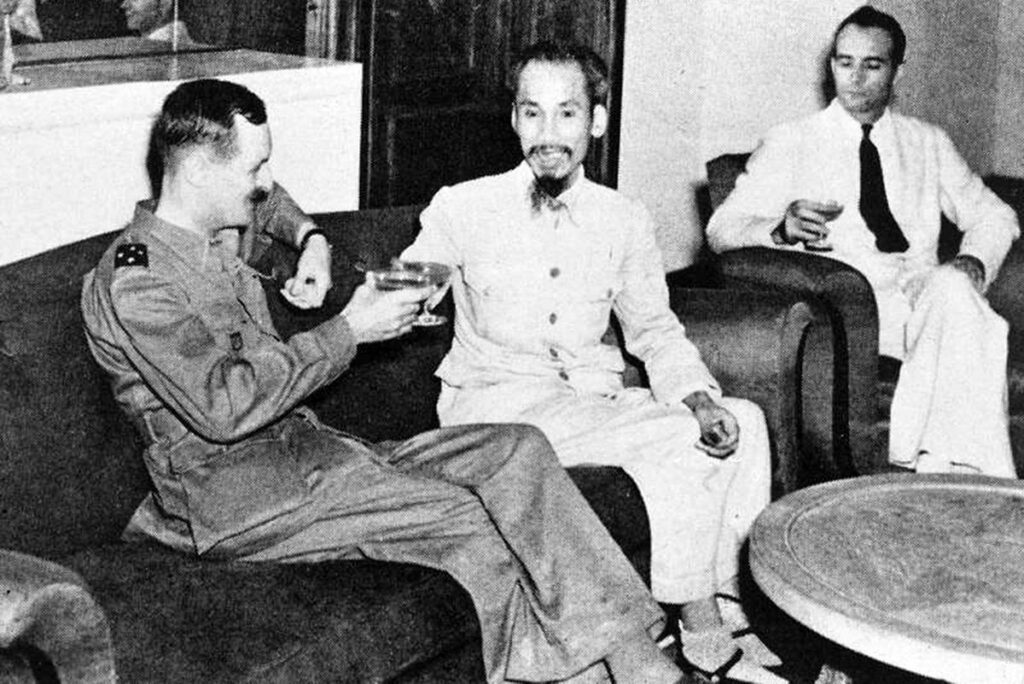
The United States, concerned about the spread of communism, viewed the Viet Minh as a communist threat and decided to support the French in their efforts to suppress the independence movement. The U.S. saw the situation in Vietnam as part of a larger global struggle against communism, influenced by the so-called domino theory.
The Battle of Dien Bien Phu in 1954 became a turning point in the conflict. The French suffered a major defeat and were ultimately forced to withdraw from Vietnam. This outcome further reinforced the notion of the domino theory, as President Dwight D. Eisenhower warned in a speech that the fall of French Indochina could lead to the spread of communism throughout Southeast Asia. This perspective shaped American policy towards Vietnam in the following years.
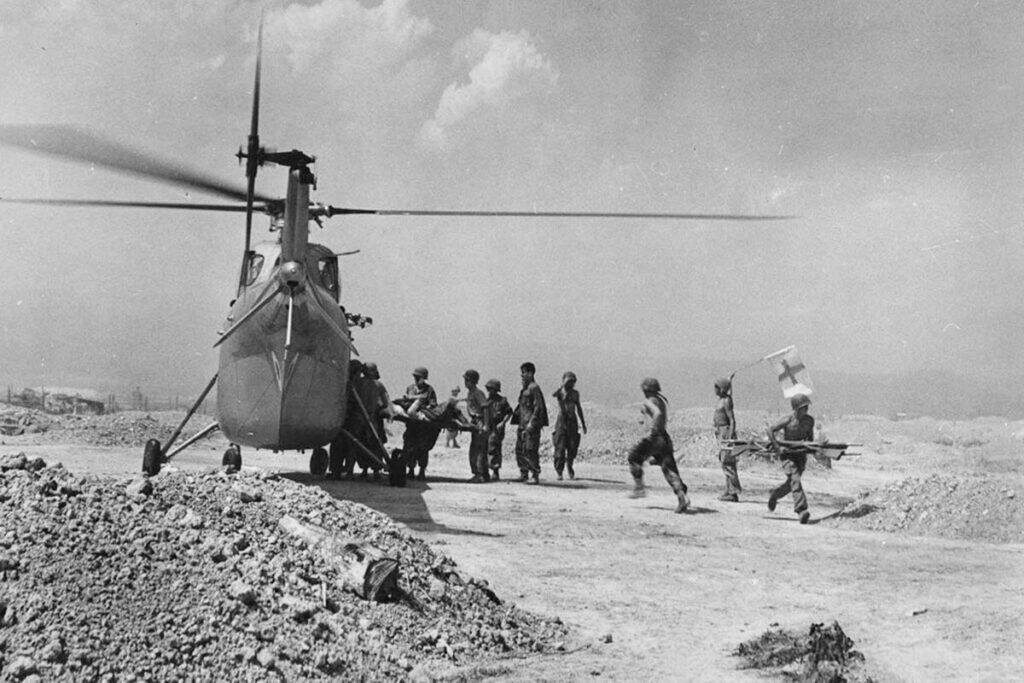
Geneva agreement
After the French defeat, the Geneva Agreement in 1954 divided Vietnam at the 17th parallel, with the promise of holding elections within two years to reunite the country under a single democratic government. However, these elections never took place.
In the South, Ngo Dinh Diem, a Catholic nationalist leader backed by the United States, emerged as the President of South Vietnam. He initiated a campaign against political dissidents. Meanwhile, in the North, Ho Chi Minh led the communist state.
In 1959, North Vietnamese forces started constructing the Ho Chi Minh Trail, a supply route through Laos and Cambodia to support guerrilla attacks against Diem’s government in the South. Infiltration of men and weapons from the North into the South began, resulting in the first American casualties.
The National Liberation Front (NLF), with support from North Vietnam, was formed as the political wing of the anti-government insurgency, while the military wing became known as the Viet Cong, considered by the United States to be an extension of North Vietnam.
The first American soldiers
In May 1961, President John F. Kennedy deployed 400 Green Berets and helicopters to South Vietnam for covert operations against the Viet Cong. Additionally, Operation Ranch Hand began in this period, involving the spraying of herbicides like Agent Orange to eliminate vegetation used by guerrilla forces as cover and sustenance.
In February 1962, South Vietnamese President Ngo Dinh Diem survived a bombing attack on the presidential palace, but his strong favoritism towards the South Vietnamese Catholic minority created discontent among the majority population, including Vietnamese Buddhists.
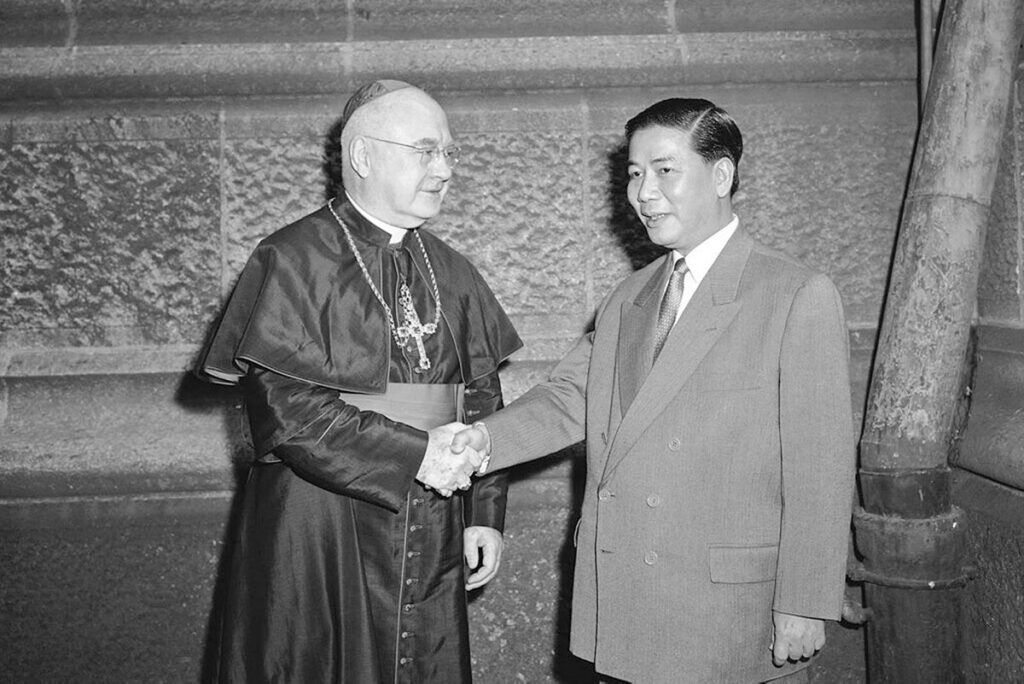
In January 1963, South Vietnamese troops suffered a defeat at the hands of a smaller unit of Viet Cong fighters in the village of Ap Bac. This surprising outcome occurred despite the South Vietnamese forces’ numerical advantage and the assistance of American advisors.
In May 1963, a tragic incident known as the “Buddhist Crisis” unfolded when the government of Ngo Dinh Diem opened fire on a gathering of Buddhist demonstrators in the city of Hue, resulting in the deaths of eight individuals, including children.
In June 1963, a 73-year-old monk paralyzed himself in protest at a major city intersection, inspiring other Buddhists to do the same in the following weeks. This further eroded the United States’ confidence in Diem’s leadership, which was already in decline.
In November 1963, the United States supported a military coup against the unpopular Ngo Dinh Diem, leading to his brutal murder, along with his brother, Ngo Dinh Nhu. Subsequently, South Vietnam witnessed a series of military coups, resulting in the rise and fall of 12 different governments between 1963 and 1965.
Lastly, in November 1963, President Kennedy was assassinated in Dallas, Texas, and Lyndon B. Johnson assumed the presidency, inheriting the escalating situation in Vietnam.
America enters the Vietnam War
In August 1964, the USS Maddox was allegedly attacked by North Vietnamese patrol boats in the Gulf of Tonkin, although the details of the attack remain disputed. This incident led President Johnson to call for airstrikes against North Vietnamese patrol boats, resulting in the first American pilot, Everett Alvarez, Jr., being captured by North Vietnam.
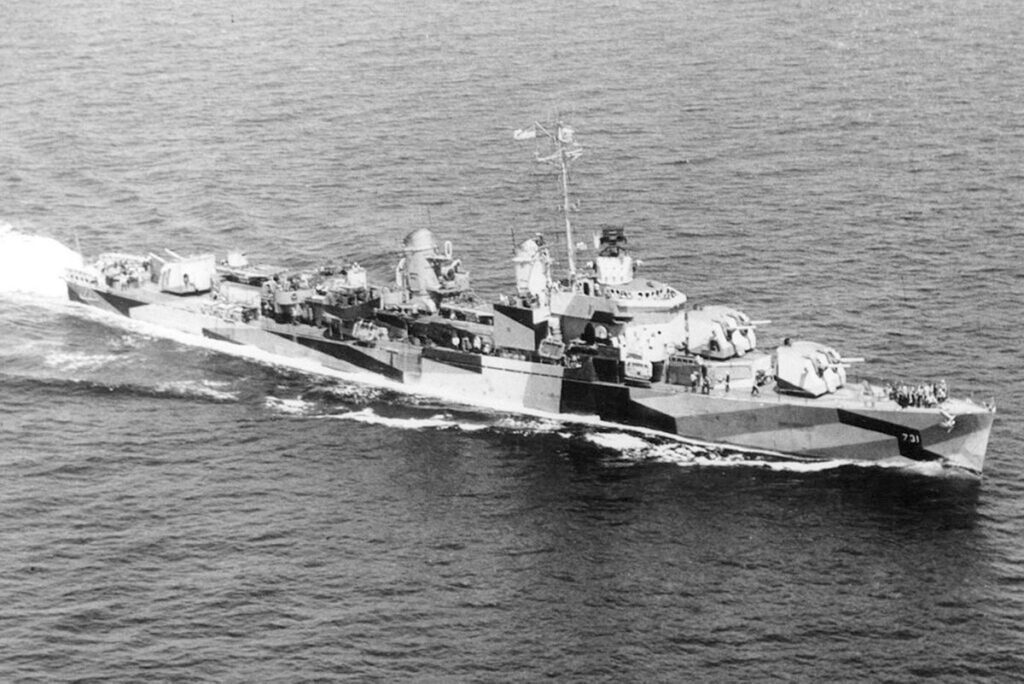
As a response to the Gulf of Tonkin incident, Congress passed the Gulf of Tonkin Resolution in August 1964, granting President Johnson the authority to take all necessary measures, including armed force, against any aggressor in the conflict.
In November 1964, the Soviet Politburo increased its support to North Vietnam by providing military supplies, including aircraft, artillery, radar, and medical supplies. China also sent engineering troops to North Vietnam to assist in building defense infrastructure.
In February 1965, President Johnson ordered the bombing of targets in North Vietnam in Operation Flaming Dart following a Viet Cong attack on a US base in Pleiku and a nearby helicopter base. This marked the beginning of sustained bombing campaigns in North Vietnam and the Ho Chi Minh Trail under Operation Rolling Thunder.
In March 1965, US Marines landed near Da Nang, South Vietnam, becoming the first US combat troops to enter the country. Simultaneously, President Johnson initiated a three-year bombing campaign targeting North Vietnam and the Ho Chi Minh Trail.
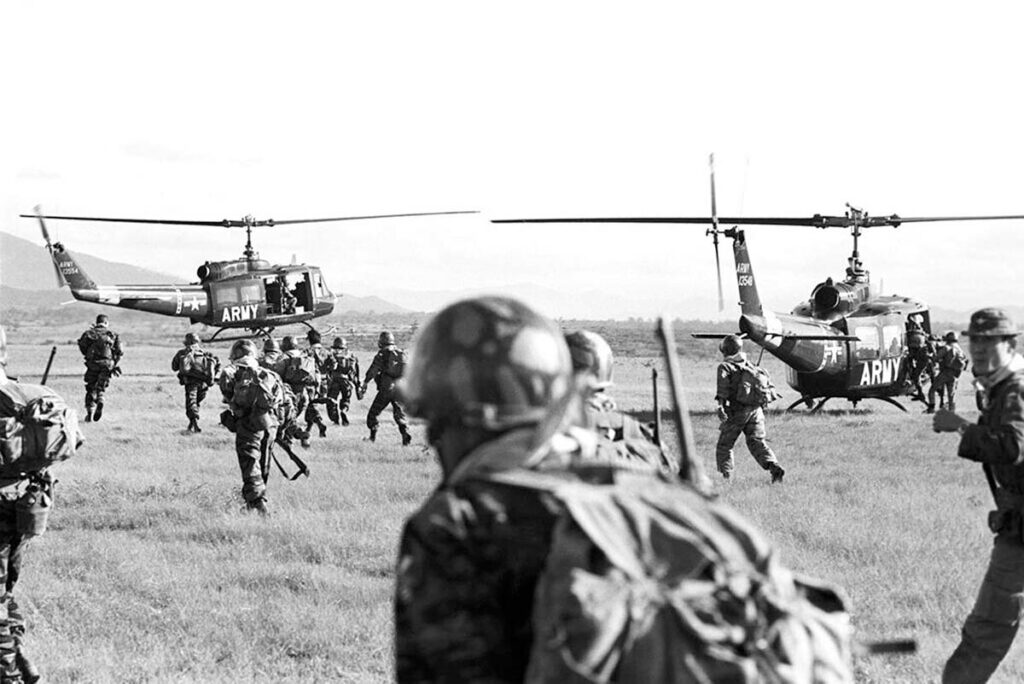
In June 1965, Nguyen Van Thieu assumed the presidency of South Vietnam, leading the Republic of Vietnam Governmental Military (ARVN).
More troops, more deaths, more protests
In July 1965, President Johnson called for an additional 200,000 American combat troops to be sent to Vietnam, escalating the US involvement in the war.
In August 1965, Operation Starlite marked the first major ground offensive by US forces. Approximately 5,500 US Marines engaged the First Viet Cong Regiment, temporarily dispersing them, though the Viet Cong would later regroup.
In November 1965, Norman Morrison, a pacifist Quaker, tragically set himself on fire in front of the Pentagon to protest the Vietnam War. The same month witnessed the Battle of la Drang Valley, the first large-scale battle of the war, resulting in heavy casualties on both sides.
By 1966, the number of US troops in Vietnam had reached 400,000, and in June of that year, US aircraft conducted airstrikes on Hanoi and Haiphong, targeting cities in North Vietnam.
In 1967, the number of US troops stationed in Vietnam increased to 500,000. Massive anti-Vietnam War protests took place in various cities, including Washington, D.C., New York City, and San Francisco.
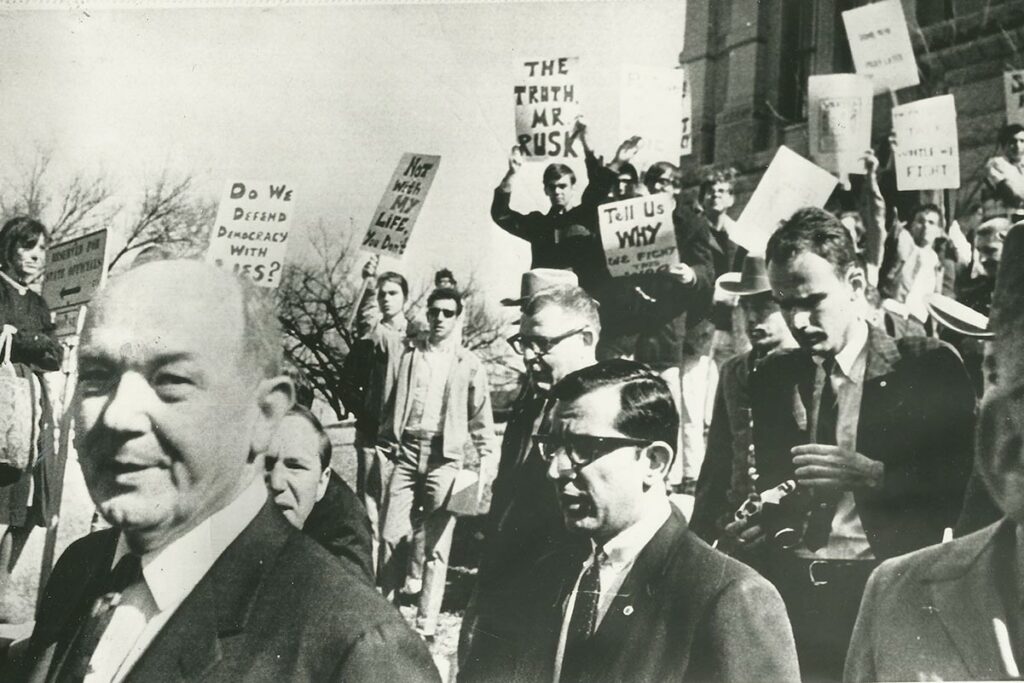
In September 1967, Nguyen Van Thieu won South Vietnam’s presidential election, and in November of the same year, the Battle of Dak To saw American and South Vietnamese forces resisting a communist offensive, resulting in significant casualties.
The Great Offensive of Northern Vietnam
From January to April 1968, the US Marine garrison at Khe Sanh faced a prolonged siege and heavy artillery bombardment by the People’s Army of North Vietnam (PAVN), holding their ground for 77 days.

In January 1968, the Tet Offensive began with a coordinated attack by the Viet Minh and North Vietnamese armies across South Vietnam, including major cities like Hue and Saigon. The offensive, which lasted for weeks, shocked US officials and marked a turning point in the war, leading to a gradual US withdrawal.
During the week of February 11-17, 1968, the Vietnam War recorded its highest number of American soldier deaths, with 543 American casualties.
In March 1968, the fighting in Hue and Saigon concluded with an American and ARVN victory as Viet Cong guerrillas were withdrawn from the cities. However, in the same month, the Mai Lai massacre occurred, where over 500 civilians were killed by American troops during search and destroy operations.
In March 1968, faced with growing backlash and anti-war sentiments, President Johnson halted the bombing in Vietnam north of the 20th parallel and announced that he would not seek re-election.
In November 1968, Richard M. Nixon won the US presidential election, campaigning on promises to restore “law and order” and end the draft.
In May 1969, a significant battle took place on Ap Bia Mountain, known as Hamburger Hill, where US paratroopers engaged entrenched North Vietnamese fighters in a ten-day battle to halt their infiltration from Laos.
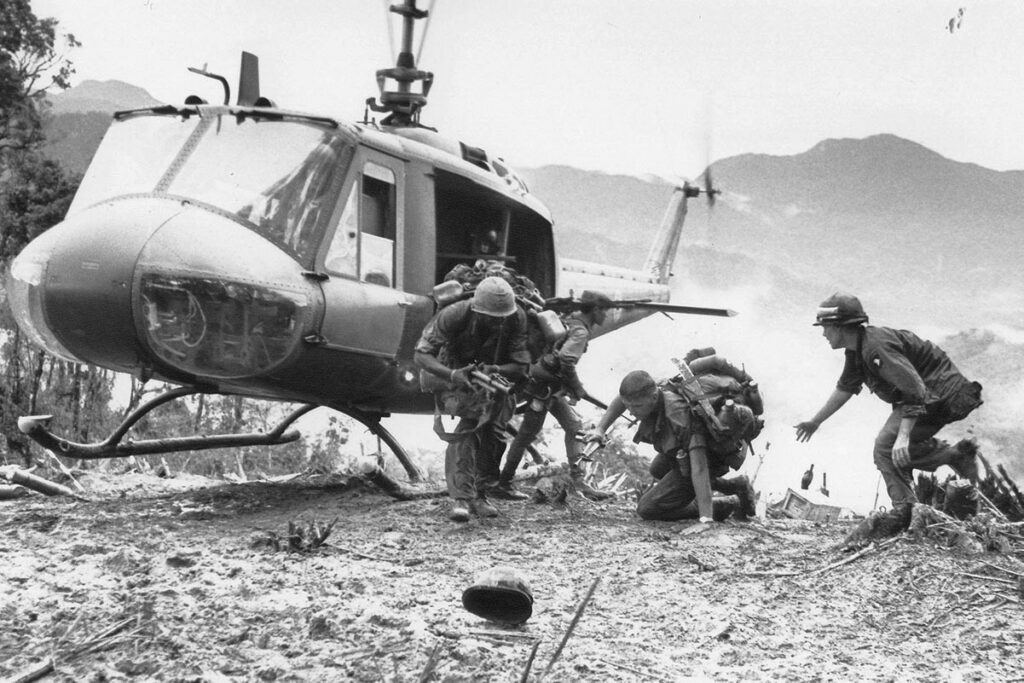
In September 1969, Ho Chi Minh, the leader of North Vietnam, passed away due to a heart attack in Hanoi.
By December 1969, the US government implemented the first draft lottery since World War II, leading to a surge in young American men seeking refuge in Canada to evade conscription, later referred to as “draft evaders.”
Gradual withdrawal from Vietnam
From January to March 1971, Operation Lam Son 719 took place, where the Army of the Republic of Vietnam (ARVN) forces, with American support, launched an invasion into Laos. The objective was to disrupt the Ho Chi Minh Trail, but the operation proved unsuccessful, resulting in a retreat and heavy casualties for the ARVN forces.
In June 1971, the New York Times published a series of articles known as the Pentagon Papers. These leaked Defense Department documents revealed the US government’s secret and incremental increase in involvement in the Vietnam War, which caused public outrage and further eroded support for the war effort.
From March to October 1972, the People’s Army of Vietnam launched the Easter Offensive, a large-scale three-pronged attack against the ARVN and US forces. Although North Vietnam gained control of more territory in South Vietnam during the offensive, it did not achieve the decisive blow that its military leaders had hoped for.
In December 1972, President Nixon ordered Operation Linebacker, a series of intense airstrikes concentrated between Hanoi and Haiphong. Approximately 20,000 tons of bombs were dropped in densely populated areas, causing significant destruction.
On January 22, 1973, former President Lyndon B. Johnson passed away at the age of 64 in Texas.
On January 27, 1973, the Selective Service Army announced the end of the draft, establishing an all-volunteer army. The same day, President Nixon signed the Paris Peace Accords, formally ending direct US involvement in the Vietnam War. The North Vietnamese agreed to a ceasefire, but behind the scenes, they continued to strategize and plan for the eventual takeover of South Vietnam.
From February to April 1973, in Operation Homecoming, North Vietnam returned 591 American prisoners of war (POWs), including prominent figures like John McCain, in a process aimed at repatriating captured American servicemen.
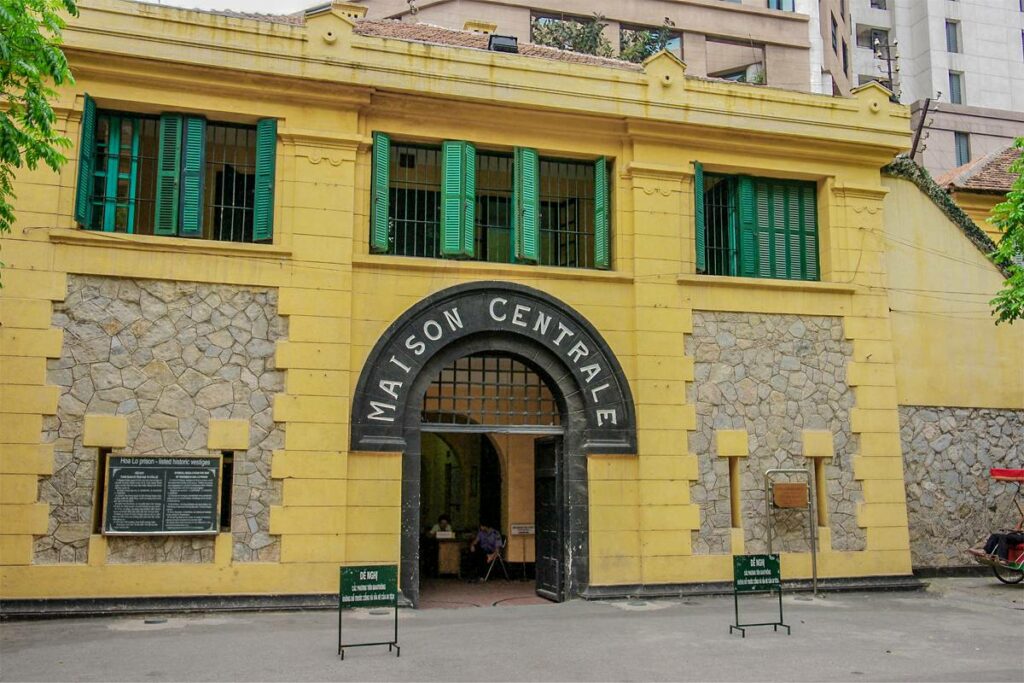
These events marked a significant turning point in the war, as the United States gradually disengaged from Vietnam and sought to bring an end to the conflict through diplomatic means. However, the ultimate fate of South Vietnam remained uncertain as North Vietnamese military officials continued to plan their next moves.
End of Vietnam War
In August 1974, President Richard Nixon resigned from office due to the Watergate scandal, facing possible impeachment. Gerald R. Ford assumed the presidency.
By January 1975, President Ford declared that there would be no further US military involvement in Vietnam, signaling a shift in American policy towards the war.
In April 1975, Saigon, the capital of South Vietnam, fell to communist forces, marking a pivotal moment in the conflict. The government of South Vietnam surrendered, and the country’s fate was sealed. In an 18-hour mass evacuation, US Navy and Air Force helicopters carried over 1,000 US citizens and nearly 7,000 South Vietnamese refugees from Saigon, as chaos and panic gripped the city.
In July 1975, North and South Vietnam were formally united under communist rule and became the Socialist Republic of Vietnam. The war, which had spanned over two decades, ended with the reunification of the country.
The human cost of the war was immense. More than 58,000 American soldiers lost their lives, and countless others were wounded or missing in action. Vietnam later released estimates indicating that approximately 1.1 million North Vietnamese and Viet Cong fighters were killed during the conflict. Additionally, up to 250,000 South Vietnamese soldiers lost their lives, and over 2 million civilians were killed on both sides of the war.
Frequently Asked Questions about the Vietnam War
Who won the Vietnam War?
North Vietnam’s communist forces, along with the Viet Cong, ended the war by seizing control of South Vietnam in 1975, and the country was unified as the Socialist Republic of Vietnam the following year.
When did the Vietnam War start?
Although the war started with the French in 1946, when the Vietnamese started their search for independence, the moment the Americans got involved is seen as the beginning of the Vietnam War. This was in November 1955.
When did the Vietnam War end?
The Vietnam War ended in April 1975 when North Vietnamese soldiers captured Saigon (today Ho Chi Minh City).
Who was the US President during the Vietnam War?
In the 20-year span of the United States’ involvement in the Vietnam War, there have been 5 presidents: Richard Nixon, John F Kennedy, Lyndon B. Johnson, Dwight D. Eisenhower, and Gerald Ford.
